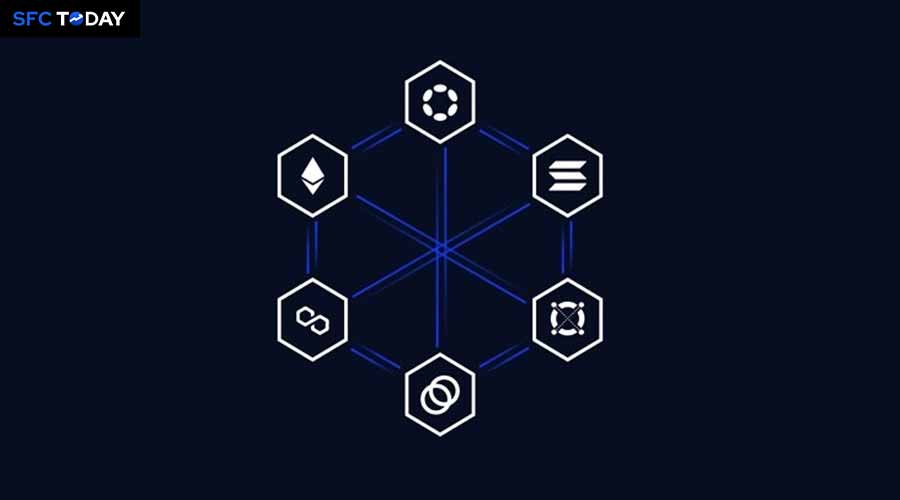The Future of Cross-Chain Interoperability: Trends, Challenges, and Innovations
In the fast-paced world of blockchain technology, cross-chain operability is now emerging as a key area of focus. As the networked blockchain technology is growing every day with the integration of various functionalities and features, what then becomes necessary is the ability to communicate and transfer one’s data or value across several chains. This article will attempt to paint a picture of what the future could look like for cross-chain interoperability: potential, what is developed so far, challenges, and promising technologies that could set the path toward a more networked blockchain environment.
What Is Cross-Chain Interoperability?
Cross-chain interoperability denotes the capability of multiple blockchain networks to coordinate and interact among themselves. This lays the groundwork for previously standalone blockchains to enable the transfer of assets, data, or even information between them. Without this, a blockchain would otherwise be an isolated digital city-state unto itself, thus impairing much of its utility, and in many ways stifling innovation.
Indeed, interoperability of chains is becoming necessary since almost every blockchain platform is different from the rest. Each platform, from Ethereum, Binance Smart Chain, and Polkadot to Cosmos, comes with its features and particular usage ideas. For example, Ethereum is known worldwide for smart contract capabilities, while Bitcoin remains the gold standard for a decentralized value transfer. Interoperability should ideally harness the strengths of many such blockchains to beget a system with added resilience and versatility.
The Current State of Cross-Chain Interoperability
A number of projects and technologies are under way to upgrade this cross-chain interoperability; some of the leading ones include:
Polkadot: Polkadot is a blockchain platform developed with interoperability at the core. A relay chain links the different parachains; in turn, the parachains have the power to process their transactions and smart contracts independently. This mechanism will ensure seamless cooperation between the parachains and the fluid exchange of information.
Cosmos: Uses the Inter-Blockchain Communication (IBC) protocol to transfer data and assets between heterogeneous independent blockchains. At the core is the Cosmos Hub, having connections to many zonechains that are independent blockchains.
ChainLink: Features decentralized oracles implemented for the transfer of data between on-chain and off-chain. Cross-Chain Interoperability Protocol (CCIP) is an innovative, secure, reliable, exchange, and linking protocol across different types of blockchain networks.
Avalanche: Avalanche has excellent features for scaling and also possesses built-in interoperability features, with its subnets and bridges making it easy to link across different chains and assets within the Avalanche ecosystem and outside it.
Emerging Trends in Cross-Chain Interoperability
The future of cross-chain interoperability, however, can be defined by a couple of emerging aspects:
Standardization Efforts: Standardizing the protocols and frameworks for chain interoperability is the most important effort toward integration without any hitch. The Interoperability Standards Group is one of the leading projects striving to find universal standards that can allow for communication across these multicolored blockchains.
Layer 2 Solutions: Layer 2 solutions, on the other hand, arise like waves following the improvement in Ethereum scalability and interoperability. These build above existing blockchains to provide faster and more efficient transactions these can be elongated across chains, finally achieving characteristics of scalability and interoperability.
Decentralized Exchanges (DEX): DEXs are poised to increase their support for cross-chain trading, enabling swaps of blockchain assets across different chains without routing through centralized intermediaries. Advanced solutions in cross-chain DEX are ever more essential for enhancing liquidity and amending access within the DeFi space.
Interoperable Smart Contracts: A main aspect is the programmability to create smart contracts that, through execution, can act across different chains. In so doing, it will be possible to realize more complex interaction and automation between the various blockchain ecosystems.
Cross-Chain Bridges: One of the most important requirements would be the inter-blockchain bridges that allow assets to move across different blockchains. To solve this, secure and efficient cross-chain bridges will ensure seamless travel across different networks.
Challenges and Considerations
However, cross-chain interoperability has several challenges:
Security Risks: Security thwarts the certainty of cross-chain interactions. A vulnerability in one blockchain can, without a doubt, threaten the whole stringed-concept network. Strong measures of security and auditing at the right places are key.
Scalability: There may be a scalability issue when the blockchain number grows and the number of crossing-chain transactions increases. In this respect, the interoperability solutions presented shall address the ability to cope with a large number of interactions without sacrificing performance.
Complexity: Management of interaction of cross-chain systems is a challenge in this regard. The development of user-friendly interfaces and tools for working with cross-chain systems is the key area of increased use of such systems.
Governance: Effective governance mechanisms are required to manage the cross-chain protocol or for dispute resolution. This can be implemented via decentralized governance, where multiple stakeholders of different chains are involved.
The Road Ahead
The future of cross-chain interoperability is promising to make a much-interconnected and efficient blockchain ecosystem. With technological advancements, the days ahead will see:
Increase in Adoption: With a connected and versatile ecosystem, many more blockchain projects will start adopting interoperability.
Enhanced user experience: Better interfaces and tools make it easy for users to engage with many blockchains, enhancing widespread adoption in the same light.
Innovative use cases: When put together, the ability to interact across chains opens up both a new use case and applications in transitioning from the present state to the multimillion-user solution, which includes advanced DeFi protocols and integrated supply chain solutions.
Community-based development: Members of the blockchain community will keep working together with the development of norms and protocols around cross-chain interactions, creating innovation and development.
Conclusion:
Cross-chain interoperability, in effect, is one of the most important facets of the upcoming cross-chain technological future. It works toward decreasing silos and allowing a lot of interaction between the diverse blockchain networks to optimize the functionality, scalability, and versatility of the blockchain ecosystem. Yet challenges need addressing since development and innovation will bring a new and interconnected era.


